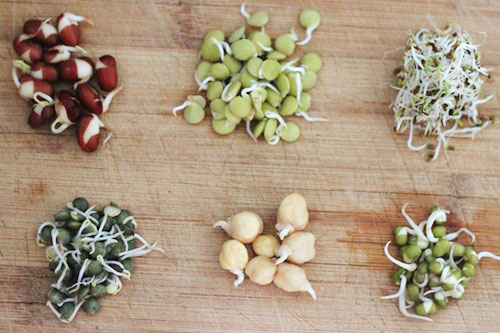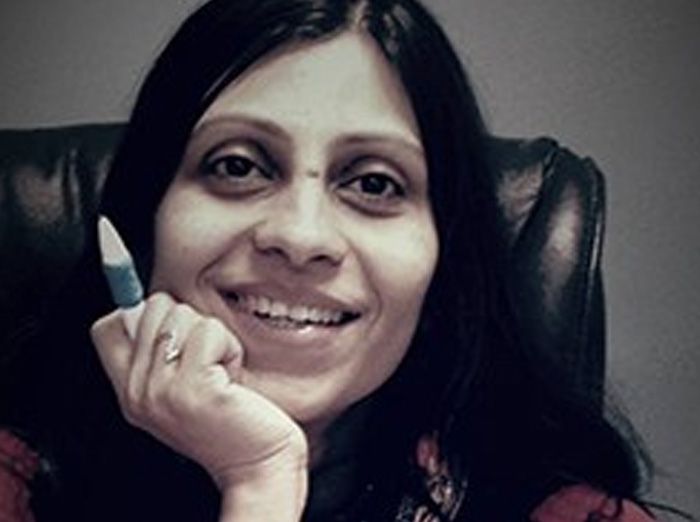INDIA New England Columnist
After reading my blog on protein myths, many of the readers requested me to write about calcium. So here we go; my humble opinion. Feel free to share yours’ under the “comment” section.
The 1990s brought us many new things. For me it was backstreet boys and the TV series, Friends. Along with that was the “doodh” (or milk) ads. These ads became an integral part of our lives so much so that we would be humming some catchy jingles. Mass hypnosis, isn’t it?
Not only that, we had celebrities and even superheroes endorsing milk with milk moustaches and “got milk?” ads. The advertisements were so powerful that it literally translated into “secret to strong bones”. Every time my 6 yr old nephew drank milk, he would tell everyone,” look my bones became so strong and some day when my bones get even stronger I would fly like superman”. Cute! But, imagine the misleading information installed at such a tender age.
The government agencies, doctors and nutritionist started recommending 3 glasses of milk per day for boosting calcium intake and to help keep bones strong. So much so that milk and calcium became synonyms.
How hypnotizing are these milk anthems and Ads, and to top it all the marketers use fear to promote their products. In this case its weaker bones or “bone thinning” called osteoporosis, which could eventually lead to fractures. So in this whole money making “milky” business, unaware consumers like us and poor cows become unintentional participants.
 CALCIUM-THE WHOLE STORY
CALCIUM-THE WHOLE STORY
Even though many of us think that consuming calcium rich food is the solution, that’s not the whole story. A 12 year Harvard study of 78,000 women who drank milk three times a day actually broke more bones than women who rarely drank milk. Similarly, a 1994 study of elderly men and women in Sydney, Australia showed that higher dairy product consumption was associated with increased fracture risk.
To protect your bones, you need calcium in your diet (TRUE) but you also need to keep calcium in your bones (now that’s the challenge).
Before we go any further, let’s first understand the what, the where and the why. What is calcium? Where does it come from originally? And why is it important for our bones.
WHAT IS CALCIUM
Calcium is a mineral; it is often misunderstood as a mineral for bones. However it is a mineral that the body needs for numerous functions, including blood clotting, wound healing, transmission of nerve impulses, and regulation of the heart’s rhythm and blood pressure. Calcium is also important in maintaining body pH.
WHERE DOES CALCIUM COME FROM?
Calcium is a mineral and the source is soils of mother earth. The source of all calcium is the soils of the earth. Plants absorb this basic element, present in watery solutions, through their roots, and then incorporate it into their various tissues—roots, stems, leaves, flowers, and fruits. Animals then eat the plant parts to obtain calcium and all other essential minerals.
HOW DOES OUR BODY GET CALCIUM?
The body gets calcium either via the food or supplement that we consume or by pulling it from bones. The latter happens when the calcium level in the blood drops too low.
HOW MUCH CALCIUM DO WE NEED?
The healthiest or safest amount of dietary calcium hasn’t yet been established. Different scientific approaches have yielded different estimates, so it’s important to consider all the evidence. To ensure that 95 percent of the population gets this much calcium, the National Academy of Sciences established the following recommended intake levels:
- 1,000 milligrams/day for those age 19 to 50
- 1,200 milligrams/day for those age 50 or over
- 1,000 milligrams/day for pregnant or lactating adult women
However a study (http://ajcn.nutrition.org/content/86/4/1054.abstract) published by the American Journal of Clinical Nutrition showed that individuals with low, but nutritionally adequate, intakes of sodium and protein may have calcium requirements as low as 500–741mg/day.
BIOAVAILABILITY OF CALCIUM
It’s not only about the amount we consume; it’s more about how well it gets absorbed into our system.
The amount of calcium we ingest may be less important than how much we actually absorb. For example, 1 cup of milk contains about 300 mg of calcium. But only about 30% of it (90 mg) is actually absorbable, and thus bioavailable (available to our bodies).
Our friends at Forks over Knives have done some comparison of calcium content and absorption rate of cow’s milk versus some plant-based alternatives.
- The calcium in firm tofu has about the same absorption rate as dairy products, hovering around 31%. And while ½ cup of tofu yields the same amount of calcium as 1 cup of milk (300 mg), it contains more protein, far less saturated fat, and about a tenth of the sodium.
- Calcium-intense vegetables like Chinese mustard greens enjoy absorption rates of around 40%. In terms of calcium content, 1/2 cup of these cooked greens will give you as much calcium as one glass of milk.
- One cup of bok choy, 1½ cups of kale, or 2 cups of broccoli contain the same amount of calcium as a glass of milk, due to their much better calcium absorption rate (in the 50–60% range! )
MILK and CALCIUM
As I mentioned earlier, for most households when you think about calcium, they immediately think milk. And why wouldn’t they, 1 glass of milk contain 300 mgs of calcium. But many scientific studies have shown an assortment of detrimental health effects directly linked to milk consumption. And the most surprising link is that not only do we barely absorb the calcium in cow’s milk (especially if pasteurized), but to make matters worse, it actually increases calcium loss from the bones. Irony!
Dr Amy Lanou nutrition director for physicians committee for responsible medicine in Washington DC states that “the countries with highest rates of osteoporosis are the ones where people drink the most milk and have the most calcium in their diets. The connection between calcium consumption and bone health is actually very weak, and the connection between dairy consumption and bone health is almost nonexistent.”
Here are some valid reasons why milk may not be best source for everyone:
- Lactose intolerance
- Milk contains high saturated fat content and that increases the risk factor for heart disease. Although there are low and skim milk options available in the market, we all know what processing does to the chemical break-down and depleting the essential nutrients, don’t we?
- Most cows’ milk contains unwanted ingredients like hormones, antibiotics, pesticides, drugs, unless it’s raw and organic.
- Drinking 3 cups of milk is relatively high in calories compared to other calcium rich foods like greens and beans.
- Milk consumption may exacerbate acne and also mucus formation for some.
- Milk is acidic in nature just like any other animal product and acidic foods cause inflammation and increase the risk of cancer and other inflammatory diseases.
Now the question arises, then how does one get calcium and ensure that it stays in our bones?
- Get calcium from greens, beans and fortified foods
- Exercise especially weight bearing exercise.
- Get vitamin D. Vitamin D plays a critical role in maintaining bone health. Our body needs vitamin D for calcium absorption
- Get Vitamin K, which is found in green, leafy vegetable plays one or more important roles in calcium regulation and bone formation.
- Watch on your caffeine Some research evidence suggests that drinking more coffee (diuretic) promote calcium excretion
- Say No to Cola beverages- Along with sugar, cola beverages are high in phosphorous, which may alter the calcium-phosphorous balance and lead to weaker bones. The Framingham osteoporosis study found that older women who drink cola every day have lower bone mineral density than those who drink it less than once a month.
- Moderate protein intake is optimum for good health. We know that we need protein to build healthy bones, but to digest protein especially animal protein (chicken, fish, red meat, eggs, etc) it releases acids into the bloodstream, which the body has to neutralize by drawing calcium from the bones. AHA!!
- Watch on your salt– A high salt intake increases calcium losses in the urine (calciuria), some of which will be directly from the bones.
- Stop smoking.
FORTIFYING WITH CALCIUM
Fortifying foods with calcium has become a popular way. I am not against it, but the rule of thumb is that natural is better, opt for natural sources as much as possible.
NATURAL SOURCES OF CALCIUM
Milk is NOT the only source of calcium, in fact there are many non-dairy sources that can provide the much needed calcium.
- Beans (1 cup cooked) – 191 mg
- Canned salmon (½ can with bones) – 232 mg
- Sardines (about 7 sardines fillets) – 321 mg
- Dried Figs (8 whole) – 107 mg
- Kale (1 cups raw) – 101 mg
- Bok choy (1 cup) – 74 mg
- Broccoli (2 cup raw) – 86 mg
- Blackstrap Molasses (1 tablespoon) – 172 mg
- Almonds 2 oz (20 nuts) – 72 mg
- Orange (1 medium) – 65 mg
- Turnip Greens (1 cup cooked) – 197 mg
- Sesame seeds (1 tablespoon) – 88 mg
- Seaweed (1 cup raw) – 126 mg
- Instant oatmeal (1 cup) – 187 mg (just choose the kinds without sugar or less sugar)
- Soy milk (1 cup) – 300 mg
- Tofu firm (½ cup)– 861 mg
BOTTOM LINE
As you can tell that the overall recommendation for calcium intake is higher given the lifestyle with increased consumption of meat, smoking, salt and low physical activity which can lead to rapid and unnatural loss of calcium via the kidney. By adopting the above recommended lifestyle changes, we not only gain enough calcium but retain the amount necessary for our bones.
Here’s to strong bones!













